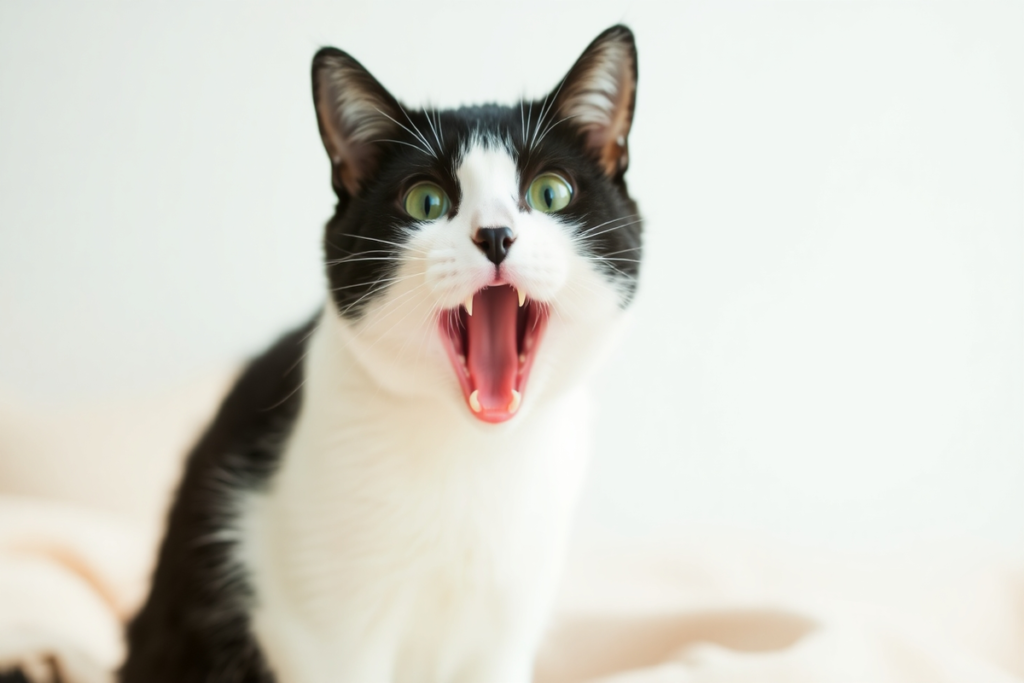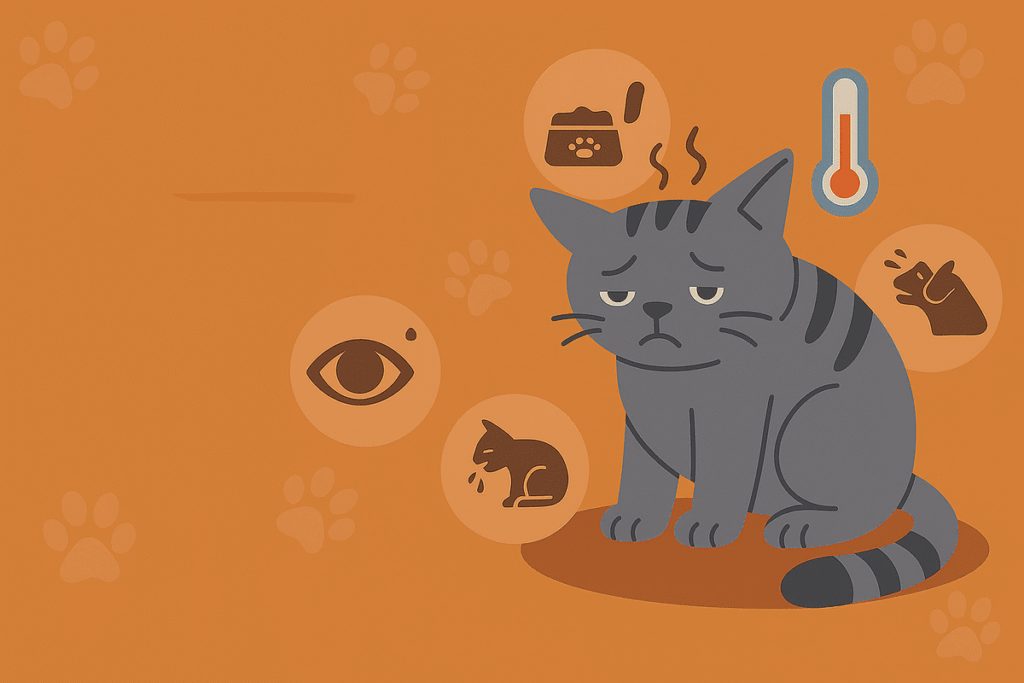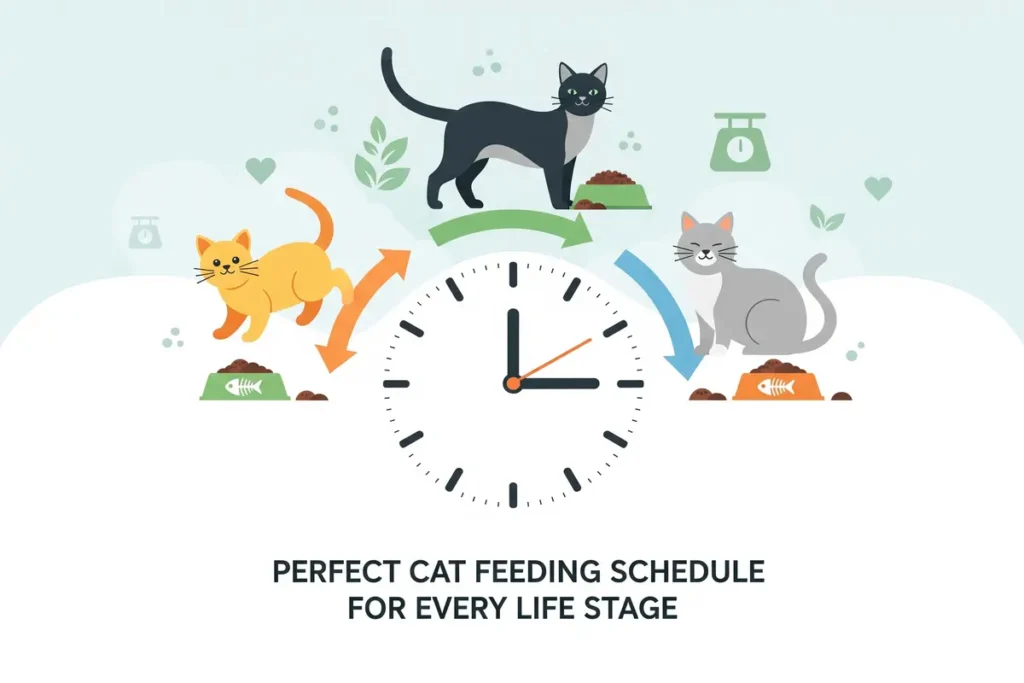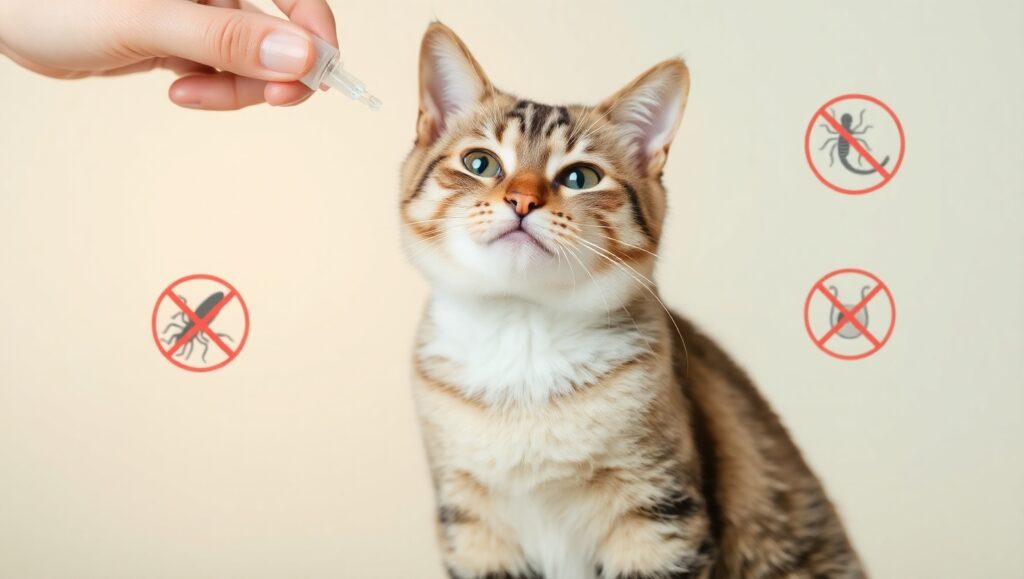There’s nothing more wonderful than a cat snuggling on your lap, purring loudly as if they have a tiny motor running inside them. But have you ever wondered why cats purr so loudly?
Most of us assume that cat purring means a happy cat – and frequently it does – but sometimes it implies more than contentment. Pet owners and cat parents often notice that some cats purr softly while others can be heard purring from across the room.
What makes the difference? And what are they trying to communicate?
Within this article, we will discuss the interesting reasons why your feline friend is purring loudly, helping pet parents better understand their beloved companion’s behavior.
What Exactly Is Purring? More Than Just a Happy Sound
Cat purring is a unique vocalization that few other animals make.
Cats use meows (which are used mostly to communicate with people) and hisses (which are a clear warning) in different ways, but purring is a soothing sound that emerges when a cat continuously vibrates throughout the process of inhalation and exhalation.
In other words, purring is a steady low-frequency sound (hum) that can mean anything from pleasure to pain.
Scientists believe the initial signal for purring comes from the cat’s brain to the cat’s larynx (voice box) muscles.
When these muscles twitch or contract rapidly, the cat’s vocal cords separate while the cat is breathing, resulting in the “purr” sound.
What Defines Purring from Other Cat Sounds?
Adult cats often purr when they are happy, but there are various reasons for purring. A cat may purr for self-soothing, request something, or soothe themselves in stressful situations. Understanding the different purrs and reasons behind the act of purring can help cat owners understand when a cat is feeling loving and affectionate, is requesting food, or needs more assistance.
- Meowing: Short sounds with inflection/different pitches. Generally meant to get the attention of humans.
- Chirping/Trilling: A friendly sound often used when a cat is about to attack or when watching birds.
- Hissing/Growling: These sounds are defensive in nature, signifying the animal is either fearful or aggressive.
Fun Fact: While most domestic cats purr, some of the big cats (cheetahs and cougars) can purr. Although lions and tigers are also felines and can’t purr, they can roar.
The Science of Purring: How Do Cats Make That Sound?
Isn’t it interesting how cats make that calm sound of a cat purring? Other sounds cats make (like meowing or hissing) are all vocalizations, but purring is a special vibration that continues seamlessly as your cat inhales and exhales. So, what is taking place inside your kitty that produces this captivating sound?
The Physical Mechanisms of Purring
For years, it has been nearly impossible to figure out the purring mechanism. The current theory on how they purr is:
- The brain sends repetitive neural signals to the muscles of the larynx.
- The laryngeal muscles contract and relax at a rate of 25 to 150 times per second, which makes the vibration.
- The diaphragm and chest muscles will amplify the sound, causing some purrs to be louder than others.
- Inhalation and exhalation occur in unison, allowing them to sound smooth and steady.
When Do Cats Begin to Purr?
Did you know that kittens can produce a purr almost immediately after birth? That gentle rumble you love in older cats begins when they are just two days old—probably long before they can meow or even open their eyes all the way. But what need do newborn kittens have to purr? The reason reveals interesting facts about the feline animal’s evolution and behavior.
The First Purrs: A Kitten’s Survival Tool
Since their first days of life, kittens purr for a few things:
A Bonding Mechanism with Mom
The vibration is a “comfort signal” to the cat mother that her babies are safe and content. Since neonatal kittens are born blind and deaf, it is an important communication signal to keep in touch.
A Milk Stimulation Method
Studies show that a purring frequency of 25-50 Hz produces a milk letdown in the nursing mother. The purring’s vibrations create momentary pressure changes against the mother’s body, likely increasing milk flow.
Why Do Some Cats Purr So Loudly? 7 Possible Reasons

1. Pure Happiness & Relaxation (The Classic “Contentment Purr”)
A loud purr is your cat’s highest compliment – the animal version of yelling, “I love this!” from the rooftops. When feeling completely comfortable and safe, cats amplify those soothing vibrations, especially when kneading, cuddling, or soaking up love. This is often a clear sign of contentment and sign of happiness.
Signs Your Cat is Purring from Happiness:
- Using their paws (like making biscuits)
- Half-closed, sleepy eyes
- Curled up in a cozy spot
- Relaxed body (not tense)
Why So Loud?
Some cats are just loud purrers naturally, like some people who speak louder than others. The cat’s breed can also influence the volume of their purring. Then, when they’re extra happy, their purring becomes deeper – just like you’d hum louder when you were enjoying a song!
Did you know?
Scientific studies have identified that purring serves as a form of communication. While fellow scientists suspect it also serves as a form of healing, there is a lot left to learn about the importance of purring to cats. For example, a loud purr may indicate that the cat is especially happy and relaxed!
2. Requesting Food or Attention (The “I Want Something” Purr)
Cats are crafty communicators! If you notice your cat loudly purring while it sits beside an empty cat food bowl or if it continues to purr while rubbing against your legs, guess what? It’s likely your cat is communicating that it wants something from you: wanting food, wanting attention, or wanting a cozy spot.
The “I want something” purr is usually coupled with specific behaviors (soft paw taps, rubbing its body against your legs, and near-constant meows) to reinforce its message.
As a small aside, a 2009 study found that some cats insert a high-frequency cry into their purr, similar to a baby’s cry that makes it practically impossible for humans to ignore.
This is known as a solicitation purr – not only cute but a science-backed way to encourage humans to nurture them.
3. Self-Healing & Pain Relief (The Hidden Benefits of Purring)
Cat purring, aside from being used for communication with other cats, serves a biological purpose, which is healing. Research has determined that the frequency of a cat’s purr (20–140 Hz) is known to promote the healing of tissues and may even help lower blood pressure in humans.
Purring can stimulate:
- Bone repair
- Tissue repair
- Decrease in swelling
- Decrease in inflammation
- Enhanced speed of healing from injury
This means that if your cat is injured, stressed, or ill, it may purr more, not because it is happy but because its body is healing itself! This natural pain management system is one of the ways cats cope with discomfort. So, if you notice your cat purring while lying down after having fallen, it might just be self-soothing.
4. Stress & Anxiety (Purring to Calm Themselves Down)
Not all purring means a cat is happy. Like people hum when anxious, cats can purr when stressed to calm themselves. This serves as a coping mechanism and can be a sign of stress rather than contentment.
What can trigger this stress?
- A visit to the vet
- Car rides
- Loud noises like thunderstorms and fireworks
A cat will sometimes have its ears pinned back, a twitching tail, and a tense body when purring due to anxiety. In these instances, purring is natural and allows the cat to alleviate fear or discomfort. Cat owners should pay attention to these signs of distress to better understand their pet’s emotional state.
5. Breathing & Respiratory Benefits
Even purring is good for the respiratory system of cats. Purring involves rhythmic muscle movement in the larynx and diaphragm, which can relax mucus in the airways, strengthen respiratory muscles, and increase oxygen flow.
If a cat is a little congested or recovering from a mild respiratory problem or upper respiratory infection, they may purr a lot.
The cat’s body is using natural purring vibrations to help with breathing compliance, in other words, supporting their normal, healthy breathing.
However, if you notice difficulty breathing or nasal congestion along with changes in purring, it’s a good idea to consult your veterinarian.
6. Playful Excitement
Sometimes, purring is amplified during fun play. If your cat is playing with a toy, chasing, or wrestling, they might be purring in an excited, almost buzzing way. This is different from the deep rhythmic purr associated with sleep and calmness.
It’s moderate to high energy and a bit chaotic, and it’s just playfully happy! Think of kids laughing uncontrollably when they are involved in something intense; it’s that type of fun burst of intensity!
7. Breed & Personality Differences
Not all cats purr the same. Some cats simply have bigger engines; certain types of cats (like Maine Coons, Ragdolls, and Siamese) are notorious for being big purrers and some other types (or reserved or shy cats) barely purr at all or it is so soft you barely notice it. Cats also differ in personality – outgoing, affectionate cats often purr louder and more often than aloof, more independent cats.
When Could Loud Purring Signal a Problem?

Pain or Sickness
If your cat’s loud purr is associated with withdrawal, being off their food, unusual aggressive behavior, or any other unusual behavior like rapid breathing, this warrants concern. Cats often engage in purring as a self-soothing behavior when they are experiencing signs of pain. Do not assume that all purring cats are happy; please look for accompanying behaviors. An underlying health issue could be the cause, and pet parents should watch for these warning signs.
Stress & Anxiety Triggers
Sudden changes to their environment can cause stress in cats. For example, adding a new pet, a new home, as well when their owners simply move furniture around. If your cat is loudly purring but showing physical stress, such as pinned ears, dilated pupils, or excessive grooming, your cat could be managing some level of anxiety.
Breathing Issues
If your cat’s purr sounds scratchy, strained, or breathy, this cat’s behavior could be a result of a respiratory problem. Health conditions can range from a non-serious cold or could also be related to more significant concerns such as asthma. It is best to get veterinary advice sooner rather than later if you hear this kind of purring, as it could indicate health problems.
How to Respond to Your Cat’s Loud Purring

Happy Purr? Reward It!
When your cat is curled up and purring during cuddle time, it signifies trust and affection. This is typically a positive sign of positive emotions. Gently pet them, focus on the areas they like (usually under the chin or behind the ears), and use a quiet voice. Spending time with your cat during these moments is a great way to deepen your bond.
“Feed Me” Purr? Check Their Schedule
If your cat demands food with a loud purr, stick to your feeding schedule, and don’t give in immediately! Giving a treat every time your cat meows could create unhealthy eating habits and weight gain.
Stressed or Sick? Observe & React
If your cat’s purrs feel “off” – forced, strained, or associated with behavioral changes – create for them a quiet, safe environment. If your cat’s purring remains unusual after a couple of days, or other symptoms appear (taking a deep breath frequently, shallow breathing, etc.), speak to your veterinarian for peace of mind.
Fun Facts About Purring
Merlin, a British cat, still holds the Guinness World Record for the loudest cat purr of 67.8 decibels — equivalent to the sound of a running shower! Can you imagine having all that purr power taking up residence in your living room?
Some cats – through genetics or early experience will purr rarely or never. It does not mean they are unhappy; it is simply that they show love in different ways, for example, blinking slowly at you or rubbing their head against you. This is just another example of how cat behavior varies among individual pets.
FAQs
Is loud purring always a good sign?
Not always. While loud purring often means happiness and relaxation, it can also indicate stress, discomfort, pain, or even simply a request for food or attention. Always look beyond the purr to your cat’s body language and behavior to identify the underlying reason for the purr. Cat owners should remember that context is the important thing when interpreting their pet’s sounds.
Why does my cat purr so loudly when I pet them?
When your cat purrs loudly while you pet it, it typically means it is feeling very relaxed, safe, and loved. It indicates that it truly enjoys your company! Purring loudly while cuddling is one of the biggest compliments that a cat can give you! This is often a clear sign of contentment.
Should I worry if my cat stops purring suddenly?
If a cat who usually purrs quite frequently suddenly stops, it could be an indication of stress, illness, or emotional discomfort. Look for other changes, like hiding, lethargy, or loss of appetite. If the changes persist, check with your veterinarian for suggestions.
Do older cats purr louder or softer?
It depends on the individual cat. Some old cats purr louder because they self-soothe more often. In contrast, others purr more softly due to weakened muscles or reduced energy. Paying attention to overall behavior helps in spotting any significant health changes. Cat parents should be aware that age can affect purring patterns.
Can I make my cat purr louder?
While you can’t make someone purr louder, you can do things to help set the environment for a loving, calm, and secure environment that would allow someone to purr happily. Gentle touch, a safe, cozy place, and positive interactions can help your cat feel just safe enough to purr and express their happiness openly.
Conclusion
Your cat’s purr definitely has its own language.
Sometimes a happiness song, sometimes a cry for help, and sometimes a self-healing superpower.
Understanding why cats purr and paying attention to when and how your cat purrs will tell you a lot about its emotional and physical state. As with all nuanced messages, context is key!
Look at your cat’s body language, activities, and circumstances to understand what it is trying to express. This cat’s way of communication is complex and fascinating.
If your gut tells you something is off, only you know your cat well enough to follow up with the vet. The next time you hear that familiar rumble, you’ll have a better understanding of what your feline friend might be trying to tell you.





